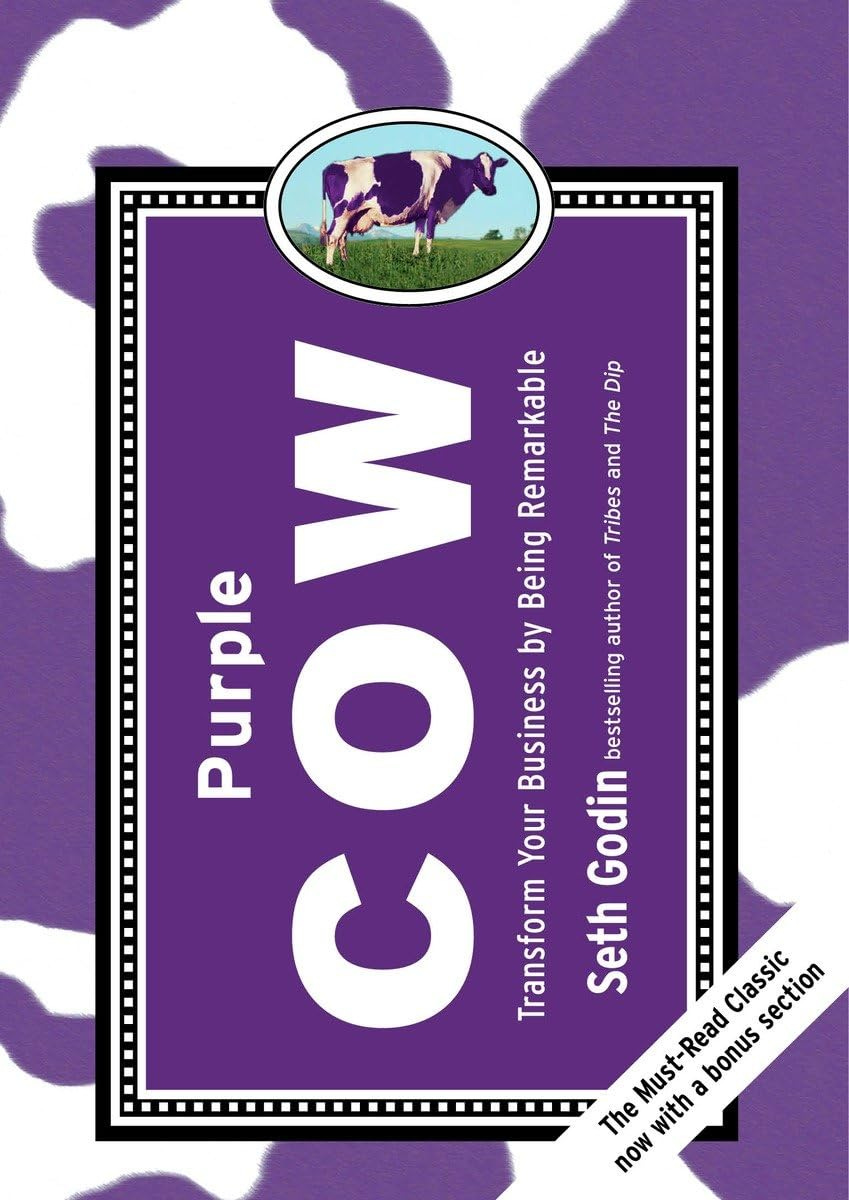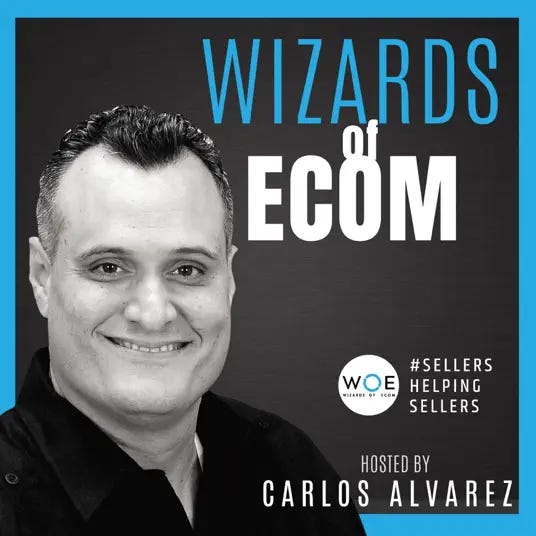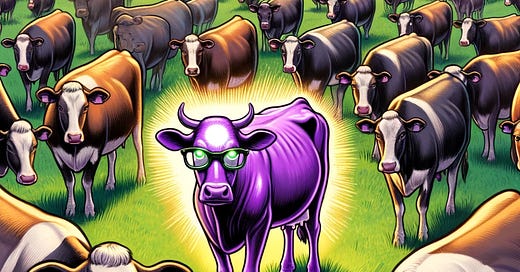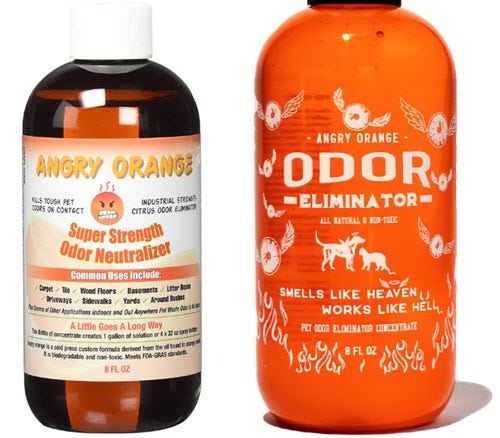Build the Marketing Into Your Product to Maximize Sales
Plus: Did you know you're reading one of the 'Top 5 Email Newsletters in 2024'?
Twenty years ago, Seth Godin introduced what is perhaps his most well-known marketing metaphor. In a tiny book with a spotted cover, he wrote the following:
Cows, after you’ve seen them for a while, are boring. They may be perfect cows, attractive cows, cows with great personalities, cows lit by beautiful light, but they’re still boring. A Purple Cow, though. Now that would be interesting. (For a while.)
The essence of the Purple Cow is that it must be remarkable...Something remarkable is worth talking about. Worth noticing. Exceptional. New. Interesting. It’s a Purple Cow. Boring stuff is invisible. It’s a brown cow.

Last week, I dusted off and updated the first product criteria checklist I ever created for my clients: The Divine Seven. (By the way, that article is now free and available to all subscribers.) At the top of the list is making sure your product is UNIQUE, which I define as “different and new.” Godin gave us the perfect way to visualize this.
If you’re more into aphorisms, the one that has always stuck with me is “build the marketing into your product.” Danavir Sarria puts it another way in the most recent edition of his DTC marketing newsletter, The Upsell. He writes:
Most marketing, especially ad creative, isn’t really thought about until AFTER someone has created a product.
The problem?
If that product has nothing unique and compelling to pitch, especially in competitive markets, the ad creative is almost always going to be crap…
So what’s my point?
All marketing STARTS during the product creation process.
That’s easier said than done, but it may help to remember that the key is perception — what consumers think is different. You don’t have to come up with something no one on earth has ever thought of before. You just need to be the first to bring it to your prospects’ attention. As Ries & Trout taught us, marketing is “not about being first, it’s about being first in the mind.”
Of course, this presents challenges as well. If uniqueness is about what consumers think is different, then we have to break out of our own minds and echo chambers. To us and our group of like-minded individuals, product ideas are always promisingly purple. But spend a few minutes in the endless cow pasture known as Amazon, and you’ll soon realize that ‘your’ idea has probably been implemented and copied to death, rendering it brown long ago.
So what’s a marketer to do? Recently, I worked with a few experts to put together a list of 11 “Secrets for Standing Out on Amazon Search.” (If you’re a paying subscriber, email me for the complete list. If you’re not … click the ‘Subscribe’ button below to become a paying subscriber and then email me. 😉) Many of the secrets intersect with today’s topic and are a great starting point. For example, here’s the first one on the list…
Choose bold, eye-catching colors
I got this idea from Amazon guru Carlos Alvarez (more on him below). His prime example is Thrasio’s Angry Orange.
According to a PickFu case study on the brand, the problem with the original version of the product was that its bottle design (shown at left above) was “as uninspired as its competitors.” In other words, it was a brown cow. Thrasio SVP John Hefter knew this was a mistake. He reasoned as follows:
Amazon is an exceptionally visual medium … We buy with our eyes first. When you scroll down the page, what makes your eye stop?
‘Scroll stopping’ is a great way to think about uniqueness. Hefter’s idea was to “design a bright orange bottle that would stand out in a sea of sameness.” That’s right, he created an orange cow! The result? “The day we changed the bottles, we sold 180 more units than the day before, and that trend never ended,” he says. Annual revenue grew tenfold, and the rest is history.
In the DRTV industry, BulbHead is an exemplar of this way of thinking. Take one of their biggest hits from last year: Little caps you put on the legs of a chair to prevent it from scratching your floor. This was not a new idea. In fact, it had already been successful on DRTV circa 2015. You can watch the original commercial below.
Despite literally being brown, the product was (perceived as) quite unique at the time. Eight years later, there’s nothing unique about it. There are literally hundreds of these on Amazon.
Here’s the thing, though: Everyone chooses a color similar to the original. That is, they choose a color designed to blend in with home decor. While that makes good logical sense, it doesn’t make good marketing sense. Indeed, it violates the first of our Divine Seven criteria, which basically says you should do the opposite of blending in. Blending in is a brown-cow strategy.
BulbHead’s brilliant marketers knew this, so when they wanted to bring back the item, they started their work during the product-creation process and built the marketing into the product. Check it out below.
The result? BulbHead’s version quickly became one of the best-selling DRTV products in the nation and rocketed to the top of the Amazon rankings, earning the coveted “Amazon’s Choice” badge as well as the “Popular Brand Pick” label.
Changing a piece of felt from brown to red or making a bottle orange might seem like a trivial change that shouldn’t have much of an impact on sales — and yet it does. Now imagine what would happen if you went beyond color and got even more creative. The sky’s the limit!
Next time, we’ll explore the second of my Divine Seven criteria (MASS MARKET) and try to answer a vexing question: What’s the minimum viable market size these days?
News(letters) You Can Use 📰
According to the aforementioned Carlos Alvarez, one of the most indispensable newsletters for Amazon sellers is … The SciMark Report?
I was pleasantly surprised to learn this week that the Chief Wizard himself has put my humble publication in his “Top 5 Email Newsletters in 2024.” I’d like to thank the Academy, my agent and, of course, all of you for your tireless support ….
Seriously, I am deeply honored to make this list because Carlos’s podcast would easily make my list of ‘Top Podcasts for 2024.’ If you sell products on Amazon and aren’t already listening to the Wizards of Ecom, you must stop what you’re doing and immediately subscribe to the show. You can find it on Apple Podcasts, Google Podcasts and Spotify.

By the way, if you listen to the episode in question, you’ll notice Carlos is not sure what free subscribers to this newsletter get versus the paying ones. That’s my fault! To clear up any confusion, my weekly emails are now completely free. (Last year, I experimented with including premium content at the bottom of each email, but I have moved away from that idea.)
As for paying subscribers, the main thing they get these days is access to additional content like the “Secrets for Standing Out on Amazon Search” document mentioned above. They also get unlimited access to my online archive, The Library of DRTV. If you’re like me and want to stay on top of the latest direct-response selling techniques, The Library is indispensable. I update it weekly with new commercials, and the collection goes back to 2007. I also use it for product and category research. Since it’s searchable and cross-referenced, I can go back years to see what has and hasn’t sold on TV.
Interested? Support my work by signing up below, and I’ll grant you access today. Paid subscriptions are just $5 per month or $50 for the year.
The Divine Seven
1. UNIQUE
(Article: Build the Marketing Into Your Product to Maximize Sales)
2. MASS MARKET
(Article: These 3 Powerful Letters Can Greatly Improve Your Odds of Choosing Hit Products)
3. PROBLEM SOLVING
(Article: The Problem Scale Can Guide You Toward the ‘Heart Attack’ You Seek)
4. PRICED RIGHT
(Article: What a Huge Walmart Mistake Can Teach Us About Product Pricing)
5. EASILY EXPLAINED
(Article: Never Try to Sell a ‘Swiss Army Knife’)
6. AGE APPROPRIATE
(Article: Why TikTok Advertisers Shouldn’t Sell Canes)
7. CREDIBLE
(Article: Don’t Even Bother With Products That Can’t Live Up to the Hype)







